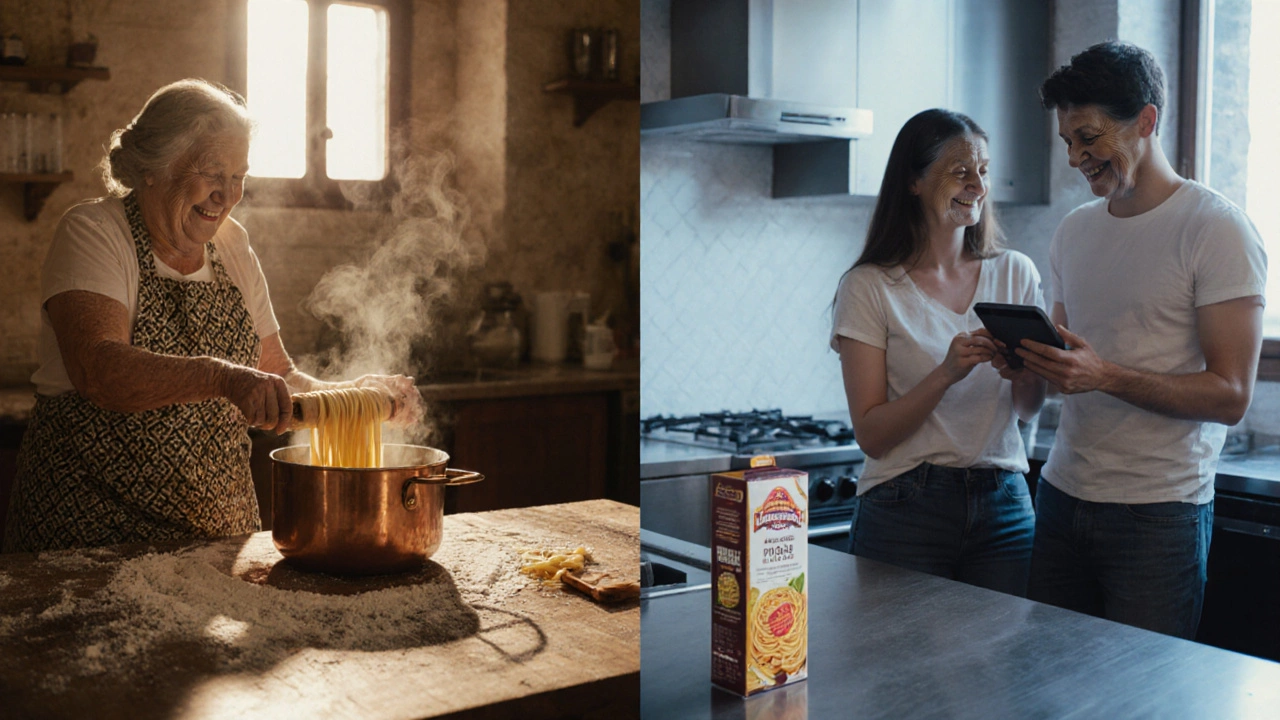Italian Pasta: Simple Recipes, Classic Tips, and Everyday Tricks
If you love a good noodle, Italian pasta is the go‑to. It’s quick, versatile, and works for any meal—from a lazy weeknight to a weekend feast. Below you’ll find the most popular pasta dishes, easy ways to get the perfect texture, and tricks that make your sauce cling like it belongs.
Four Classic Italian Pasta Dishes You Must Know
Spaghetti Carbonara mixes eggs, cheese, pancetta, and pepper. The secret is to whisk the egg‑cheese combo off the heat so the sauce stays creamy, not scrambled. Use fresh spaghetti, cook it al dente, and keep a splash of pasta water handy for the right consistency.
Cacio e Pepe is basically cheese, pepper, and pasta. Grate Pecorino Romano, toast black pepper, and toss everything with hot pasta water. The starch in the water helps the cheese melt into a smooth coating.
Amatriciana swaps pancetta for guanciale and adds canned tomatoes and chili flakes. Simmer the meat until it’s crispy, then add tomatoes and let the sauce reduce. Finish with a handful of Pecorino and a drizzle of olive oil.
Classic Bolognese takes time, but the flavor payoff is worth it. Brown ground beef (or a mix of pork and beef), add carrots, celery, onion, tomato paste, and a splash of wine. Simmer low and slow, then serve over wide ribbons like tagliatelle.
Everyday Tips for Perfect Pasta Every Time
1. **Salt the water** – a good rule is about 1 tablespoon per 4 L of water. It seasons the pasta from the inside out.
2. **Cook al dente** – set a timer a minute or two before the package says it’s done. The bite is firmer, and it holds sauce better.
3. **Save pasta water** – the starchy liquid is gold for loosening thick sauces and making them stick.
4. **Don’t rinse** – rinsing washes away the starch that helps sauce cling. Only rinse if you’re making a cold pasta salad.
5. **Match shape to sauce** – thin strands work with light oil‑based sauces, while ridged or tubular shapes like rigatoni hold chunky sauces.
6. **Finish in the pan** – after draining, toss the pasta back into the sauce pan for the last minute. This lets the pasta absorb flavor and creates a glossy finish.
7. **Add a splash of butter or oil** – a small knob of butter or drizzle of olive oil at the end adds richness and a silky mouthfeel.
8. **Season before serving** – taste the pasta after mixing with sauce. You may need a pinch more salt or pepper.
Whether you’re a meat lover, vegetarian, or vegan, there’s an Italian pasta dish that fits. Swap pancetta for smoked tempeh in carbonara, use plant‑based cheese for cacio e pepe, or go gluten‑free with corn‑based pasta. The core steps stay the same, so you can experiment without breaking the basics.
Now that you’ve got the four classic dishes and a handful of practical tips, it’s time to fire up a pot. Grab your favorite shape, a good splash of olive oil, and enjoy the simple joy of Italian pasta right at home.
Why You Can Eat Fresh Pasta in Italy but Not in the US - The Legal and Cultural Reasons


